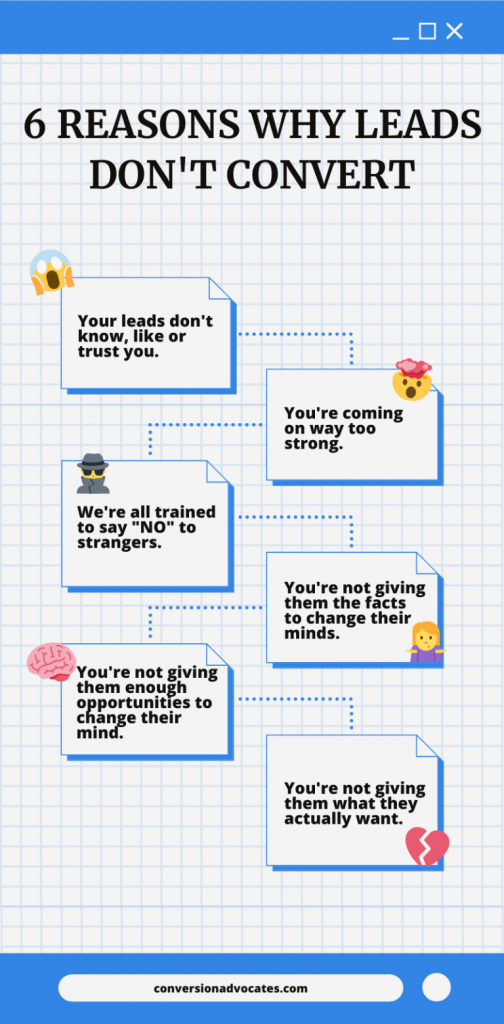
How to Deal with Ineffective Sales Pitches That Aren’t Converting Leads is a critical concern for businesses today. Many sales representatives find themselves facing the frustrating reality of delivering pitches that fail to resonate with prospects and convert them into paying customers. This in-depth guide explores the root causes of ineffective sales pitches and provides actionable strategies to transform your approach and maximize conversion rates. The article will cover several aspects, including identifying common mistakes, improving communication skills, understanding customer needs, and tailoring your sales approach. Let’s dive in!
Identifying the Root Causes of Ineffective Pitches
Common Pitches Mistakes
Many sales representatives unknowingly make common mistakes in their pitches that hinder conversions. These pitfalls often stem from a lack of preparation, poor communication skills, or a failure to understand the customer’s needs. A lack of product knowledge also plays a significant role, as representatives who are not thoroughly familiar with their products often struggle to articulate their value proposition effectively. Another crucial factor is the failure to actively listen and tailor the pitch to the prospect’s specific needs and pain points.
Unclear Value Proposition
Often, the pitch itself lacks a compelling value proposition. Instead of focusing on how the product or service solves a specific problem for the customer, sales representatives may get bogged down in technical details or irrelevant features. In many cases, this can lead to a lack of interest from the prospect, as they don’t see how the offer directly addresses their pain points. By failing to communicate the value proposition clearly, sales representatives often miss opportunities to connect with their prospects on a deeper level. This lack of clarity is the core reason for the ineffective pitches.
Improving Communication Skills and Engagement
Active Listening and Empathy
Active listening is essential to understand the customer’s needs and concerns. This involves paying close attention to what the customer says, both verbally and nonverbally, and responding empathetically. Sales representatives must demonstrate a genuine understanding of their client’s situation, which helps in building trust and rapport. By actively listening, sales representatives can tailor their pitch to better address customer needs, which ultimately leads to more effective communication.
Tailoring the Pitch to the Customer
Tailoring the pitch to the specific needs of each prospect is critical to increase engagement and conversion rates. Rather than presenting a generic pitch, sales representatives must tailor their messaging to address the specific pain points and concerns of each customer. This involves understanding their background, industry, company goals, and challenges, so the sales pitch is more relatable and relevant. Effective communication and tailored solutions will increase the chances of conversion.
Understanding Customer Needs and Pain Points
Researching and Understanding
Knowing the customer’s needs and pain points requires thorough research. Gathering information about the target audience, their industry, company objectives, and challenges before the meeting can enable you to tailor your pitch to each customer’s individual needs and concerns. A deeper understanding of customer motivations can help a representative create a more persuasive and effective sales pitch.
Proactive Questioning
Asking insightful questions can uncover hidden needs and concerns. Asking open-ended questions, encouraging the customer to speak about their problems, and showing genuine interest can help reveal more insights into their specific needs and motivations. Asking the right questions allows sales representatives to tailor their solutions precisely to address those needs. This is one of the most crucial steps to improve sales outcomes.
Adapting Your Sales Approach
Building Rapport and Trust
Building rapport and trust with the prospect is a cornerstone of effective sales. Establishing a connection with the client, understanding their background and motivations, and showing empathy builds trust and increases the likelihood of conversion. A trusted sales representative is more likely to convert a potential customer to a loyal customer.
Using Storytelling to Engage
Storytelling can help your product or service resonate with the customer on an emotional level. Including a story in your pitch that highlights how your product or service has helped similar clients succeed can make a huge difference in capturing the audience’s attention. This will add a human element to your pitch and increase your chances of getting your message across. This method can be more impactful than simply presenting facts and figures.
Utilizing Technology and Resources
Leverage Digital Tools
Today’s sales environment heavily relies on technology. Utilizing digital tools for research, communication, and follow-up can increase sales performance and efficiency. Employing these tools can help sales representatives track progress, analyze data, and stay organized. Digital tools help in streamlining the entire process, from initial contact to closing the deal.
Utilizing Data and Analytics
Using data and analytics to tailor your approach is another important element in boosting sales. Analyzing past sales performance, identifying trends, and understanding customer preferences helps personalize your communication and increase conversion rates. This approach results in a more customer-centric approach.
In summary, mastering the art of effective sales pitches is crucial for converting leads. By understanding the reasons behind ineffective pitches and proactively implementing strategies to improve communication and engagement, you can drastically increase your conversion rates. Remember to analyze your past performance, identify your weak points, and tailor your approach based on your audience’s needs and preferences. Continuous learning and adaptation are key to success in sales. Now, go out there and make those sales! Contact us today to learn more about our sales training programs.